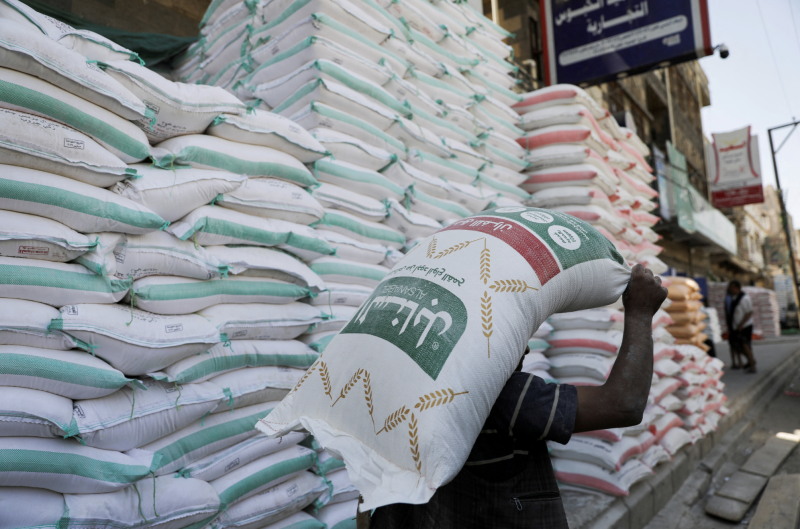Yemen: Houthis Rebels Used Landmines in Aden


Houthi forces apparently laid banned antipersonnel landmines in the Yemeni port of Aden before withdrawing from the city in July 2015. The Houthis, also known as Ansar Allah, may also be responsible for laying new antipersonnel mines in Abyan governorate, northwest of Aden. Landmines and explosive remnants of war killed at least 11 people and wounded over 12 in Aden in August, according to Yemeni mine clearance officials and media reports. Two deminers were among those seriously wounded.
“Yemen, like most countries, has banned antipersonnel mines, so it’s of grave concern to see these indiscriminate weapons used in the south,” said Steve Goose, arms director. “Houthi forces should immediately cease using antipersonnel mines and respect Yemen’s obligations as a party to the Mine Ban Treaty.”
The United Nations Human Rights Council should create a commission of inquiry to investigate alleged serious laws-of-war violations by all parties to the current conflict in Yemen, Human Rights Watch and 22 other human rights and humanitarian organizations said in August.
Yemeni mine action officials told Human Rights Watch that on July 11 they began emergency clearance of landmines and explosive remnants of war from several residential districts of Aden previously controlled by Houthi forces, including Khormaksar, Jaulaa, and Green City in the Dar Saad neighborhood, and Bir Ahmad and Amran in al-Buraika. They said that on their first day in Amran, clearance teams collected more than 140 mines. By August 12, the clearance teams had removed 91 antipersonnel mines of two types from Aden as well as 666 antivehicle mines, 316 improvised explosive devices, and various grenades, shells, and fuzes. The officials said that during the recent fighting in Aden, their vehicles, protective equipment, and supplies had all been looted.
On August 18, local security officials warned international nongovernmental organizations working in southern Yemen to limit their movements because of the danger posed by landmines likely laid by Houthi forces, particularly in northern and eastern areas of Aden before they withdrew from the city, and in neighboring Abyan and Lahj governorates.
Since Houthi forces retreated from Aden there has been no evidence to suggest that southern fighters or members of the Saudi-led coalition have used mines.
International assistance is urgently needed to equip and assist clearance personnel to systematically survey and clear mines and explosive remnants of war from Aden and other parts of Yemen that have recently experienced fighting, Human Rights Watch said. Appropriate compensation, assistance, and support should be provided to those injured as a result of the deployment of these mines and to the families of those injured or killed, as well as to other landmine victims in Yemen. Assistance should include medical care, prosthetics where appropriate, and ongoing rehabilitation if needed.
A total of 162 nations are party to the 1997 Mine Ban Treaty, which prohibits use, production, transfer, and stockpiling of antipersonnel mines and requires their clearance and assistance to victims. Yemen ratified the treaty on September 1, 1998, committing to never use antipersonnel mines under any circumstances, and to prevent and suppress activities prohibited by the treaty.
Human Rights Watch is a founding member of the International Campaign to Ban Landmines, which received the 1997 Nobel Peace Prize for its efforts to bring about the Mine Ban Treaty and for its contributions to a new international diplomacy based on humanitarian imperatives.
Landmine Use in Southern Yemen
In 2009, Yemen declared the completion of mine clearance in Aden after clearing and handing back formerly mine-affected areas.
Landmines believed to have been laid by Houthi forces before retreating from Aden in July 2015 have caused numerous casualties. Local security experts said that on August 1, 9 people were killed and 18 wounded from a series of landmines explosions in Aden. On August 4, a resident of Aden was killed in a landmine explosion as he entered the city from Lahj governorate. The IRIN humanitarian news agency reported that a man was killed on August 10, and his 4-year-old son wounded, after their vehicle hit an antivehicle mine in Khormakser, Aden.
People were also reported killed or wounded by landmines in Zinjibar and Lawdar in Abyan governorate on August 8, 10, and 12.
Landmines were also laid by Houthi forces in Abyan governorate, immediately to the east of Aden, according to a retired Yemeni deminer. He told Human Rights Watch that he witnessed Houthi fighters laying mines on August 8, shortly before an attack by southern forces pushed them out of the area:
When the resistance [southern fighters] started to attack Abyan from the south on August 8, I saw the [Houthi forces] withdrawing from parts of Abyan, such as Lawder. I saw them [the Houthis] from the top of a small mountain here in Lawdar, and they put the landmines at locations under their control. I couldn’t recognize the type of mine when they laid them, because I was very far away. But afterwards I checked the area and I demined the antipersonnel mines and the IEDs [improvised explosive devices] by myself. Some of them we exploded because they are very dangerous and the others we turned over to the National Demining Center.
Col. Abdullah Ali Sarhan, an engineer at the National Demining Training Center in Aden’s Dar Saad, told Human Rights Watch that in late August his team had cleared mostly Soviet-made antivehicle mines from Aden, but to their “most shocking surprise” they had also found newly laid banned antipersonnel mines. Two demining team members were seriously wounded in the course of clearing the landmines from Aden.
Demining Center staff showed Human Rights Watch two types of antipersonnel blast mines that were cleared from Aden, including five PPM-2 antipersonnel mines manufactured in the former East Germany and a GYATA-64 antipersonnel mine of Hungarian origin. There were also TM-62 and TM-57 antivehicle mines manufactured in the former Soviet Union.
A deminer at the center told Human Rights Watch the teams cleared 14 PPM-2 antipersonnel mines and 120 antivehicle mines from the governorate of Abyan. He described the mines as “newly laid.”
In April 2002, Yemen had reported to the UN secretary-general that it had completed the destruction of its stockpile of antipersonnel mines as required by the Mine Ban Treaty.
Yemen did not report destroying GYATA-64 or PPM-2 mines among the four types of stockpiled antipersonnel mines included in its declaration to the secretary-general. It also did not report keeping GYATA-64 and PPM-2 mines for training mine clearance personnel.
Both the PPM-2 and GYATA-64 mines have been used elsewhere in Yemen recently. Foreign Policy reported that in late 2011, Republican Guard forces laid approximately 8,000 landmines, including GYATA-64 and PPM-2 mines, at Bani Jarmooz, less than 32 kilometers north of Sanaa, the capital. These mines, which killed two civilians and wounded at least 20, still have not been cleared. In November 2013, the Yemeni government admitted that a “violation” of the Mine Ban Treaty had occurred during the popular uprising that led to the ouster of then-President Ali Abdullah Saleh.
Human Rights Watch also recorded the use of PPM-2 mines in Sanaa, one of which maimed a 10-year-old boy on March 4, 2012.
The evidence of further use of GYATA-64 and PPM-2 antipersonnel mines in Aden suggests either that the 2002 declaration to the UN secretary-general on the completion of landmine stockpile destruction was incorrect, or they were acquired from another source. It is unlikely the GYATA-64 or PPM-2 antipersonnel mines found in Aden were manufactured recently as both Germany and Hungary signed the Mine Ban Treaty in December 1997, committing to end production and transfers of antipersonnel landmines.
Previously, in 2013, the Yemeni government accused Houthi forces of using so-called homemade antipersonnel mines, otherwise known as victim-activated improvised explosive devices (IEDs), in 2011-2012 in Saada and Haijja governorates during fighting with local Sunni tribes backed by the government.
Col. Abdullah al-Wihish at the demining center said the IEDs in Aden were locally made. He told Human Rights Watch that many were “connected to a pedal 2-3 meters away from the mine. This pedal is provided for even lightweight individuals, so if anyone steps on the pedal it will blow up the landmine.”
Victim-activated IEDs that explode due to the presence, proximity, or contact of a person fall under the definition of an antipersonnel landmine and are prohibited by the Mine Ban Treaty.
Human Rights Watch

Aden — Yemen Airways has announced new updates to its ticket cancellation (VOID) policy, introducing financial penalties on travel agents in…

Geneva – The United States announced that Yemen will not be among the countries benefiting from a new $2 billion funding pledge for United Na…

Paris — The French humanitarian organization Acted announced that it has delivered cash assistance to nearly 89,000 people affected by displa…